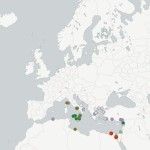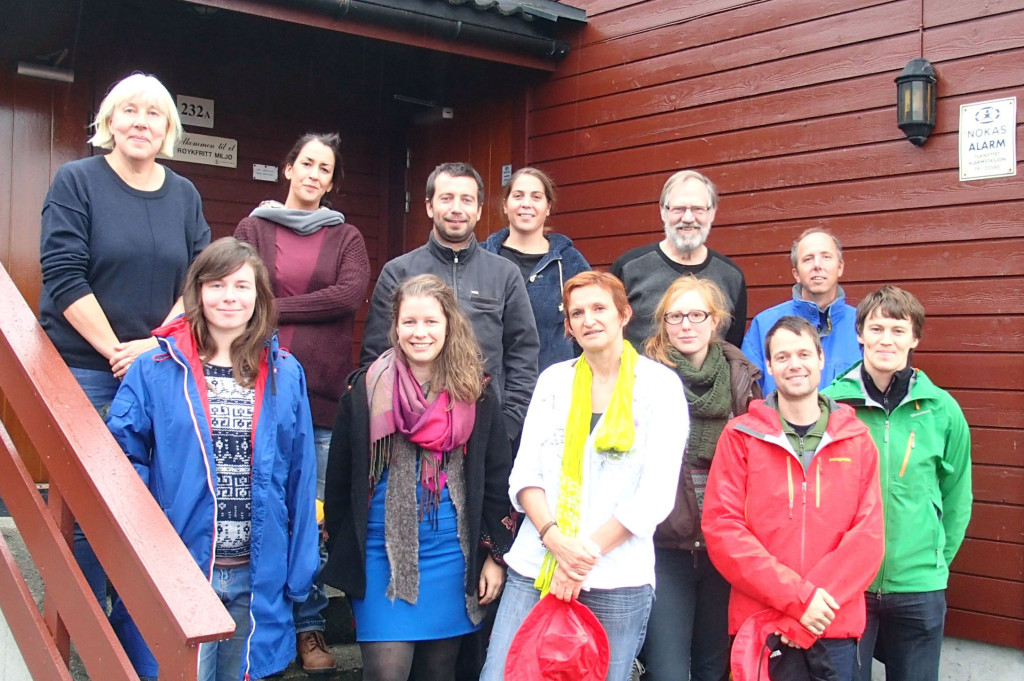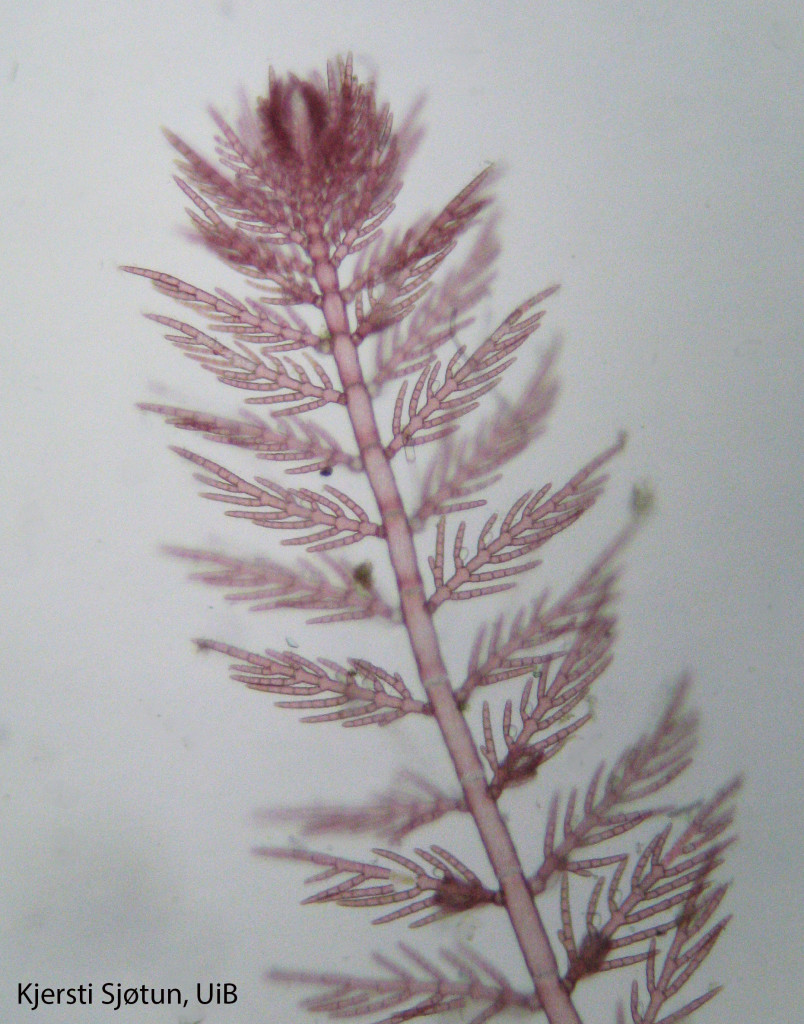The INVASIVES project ended in 2016, and these pages will no longer be updated. The project has an active page on ResearchGate where collaborators can be reached and publications are listed.
Introduced seaweed distribution maps available

Distribution maps of 153 introduced seaweed species in the European and Mediterranean areas have now been published through work package 2. See under ‘About invasive seaweeds’; or click here.
External news: “EU adopts innovative legislation on invasive species”
A short article about recent EU legislation on invasive species has been published in the November issue of Biological Invasions, entitled, “EU adopts innovative legislation on invasive species: a step towards a global response to biological invasions?“. Here the authors, Genovesi et al., discuss the new legislation, its main features, and potential impacts.
Genovesi P, Carboneras C, Vilà M, Walton P (2014) EU adopts innovative legislation on invasive species: a step towards a global response to biological invasions? Biological Invasions, DOI 10.1007/s10530-014-0817-8
Sampling Sargassum in Morocco
Sargassum muticum has been spreading its European invasive range towards the south. The latest record was in 2013 by Brahim Sabour and his colleagues on the Northern Moroccan Atlantic coast along the shoreline of Doukkala (Sabour et al., 2013).
This November, the Portuguese partners from the Seas-Era INVASIVES project headed south for their 2014 last sampling campaign. Two sampling points (Sidi Bouzid and Saahda) in S. muticum southernmost invasive range recorded so far (El Jadida) were visited and samples taken in order to study its associated bacterial community.
Moroccan populations, despite their abundant presence in intertidal rocky pools, are scattered along the Doukkala shoreline with just a few records. Thanks to Brahim Sabour we were able to spot the exact location and easily enrich our sampling in the framework of the INVASIVES project. Even though the S. muticum was small in size by the time we were sampling, specimens can reach around 7 meters long during reproductive stage around April/May (Sabour pers. com). Efforts were also made to spot S. muticum in Essaouira (around 300 Km south of El Jadida) but without success.
[slideshow_deploy id=’366′]
Photos and text: Tania Aires
Sabour B, Reani A, Magouri H, Haroun R (2013). Sargassum muticum (Yendo) Fensholt (Fucales, Phaeophyta) in Morocco, an invasive marine species new to the Atlantic coast of Africa. Aquatic Invasions 8(1): 97-102.
Open Access at: http://www.aquaticinvasions.net/2013/AI_2013_1_Sabour_etal.pdf
Midway project meeting
The halfway meeting of the INVASIVES project recently took place at Espegrend Marine Biological station (University of Bergen, Norway). Thirteen participants from five countries attended the meeting to discuss their work and future directions. This included many interesting presentations on progress in the different work packages. We were also joined by a representative from the Norwegian Environment Agency (Miljødirektoratet), Ingrid Handå Bysveen, for a session to discuss interaction between scientists and management agencies. As typical for western Norway, the weather was disappointing – but the meeting was a great success!

INVASIVES meeting 2014, Espegrend (Norway). Upper row: Kjersti Sjøtun, Tania Aires, Filipe Henriques, Sabrina Le Cam, Karl Gunnarsson, Aschwin Engelen. Lower row: Caroline Armitage, Gwladys Surget, Valerie Stiger-Pouvreau, Sofie Vranken, Olivier De Clerck, Samuel Bosch
External news: “Resourceful crustaceans turn invasive seaweed into homes”
A positive impact of an invasive seaweed was recently highlighted by an article in Discover magazine. The article summarises the findings of Wright et al. (2014), who investigated colonisation of the invasive seaweed Gracilaria vermiculophylla by amphipods and other crustaceans. Although it is not grazed, the addition of the seaweed to some US mudflats appears to support a food web that was not present in this environment previously. The full article is available on the Discover website: “Resourceful Crustaceans Turn Invasive Seaweed into Homes”.
Wright, J., Byers, J., DeVore, J., & Sotka, E. (2014). Engineering or food? Mechanisms of facilitation by a habitat-forming invasive seaweed. Ecology, 95 (10), 2699-2706 DOI: 10.1890/14-0127.1
Second finding of an introduced alga in Norway
Anthithamnion nipponicum is a small red alga, originally from the Pacific. During the last decade it has been recorded in the Mediterranean, Spain, and on the coast of North America.
A. nipponicum was first found in Norway in 2007, at Stora Karlsøy in Hordaland. During that year it was found in April and September as an epiphyte in the intertidal zone (Rueness et al. 2007).
Now it has been found for a second time, again during an algal biology course at the University of Bergen. In September, kelp forests around Lyroddane (Korsfjorden, Hordaland) were dredged for samples, and a patch of A. nipponicum was found growing epiphytically on some Laminaria hyperborea blades.
The finding of A. nipponicum in 2007 led the discoverers to believe that its appearance could be linked to the warm temperatures that year. This second finding fits with that idea, given the unusually warm temperatures in western Norway over this summer.

Antithamnion nipponicum
More information on this species:
- The Norwegian Seaweeds Group at seaweeds.uib.no: Antithamnion nipponicum
- Rueness, J., Heggøy, E., Husa, V., Sjøtun, K. (2007) First report of the Japanese red alga Antithamnion nipponicum (Ceramiales, Rhodophyta) in Norway, an invasive species new to northern Europe. Aquatic Invasions 2(4): 431-434
Website launched
The INVASIVES project website is now online!
As the site is still under construction, please be aware that certain pages may be down or incomplete for a short time.
